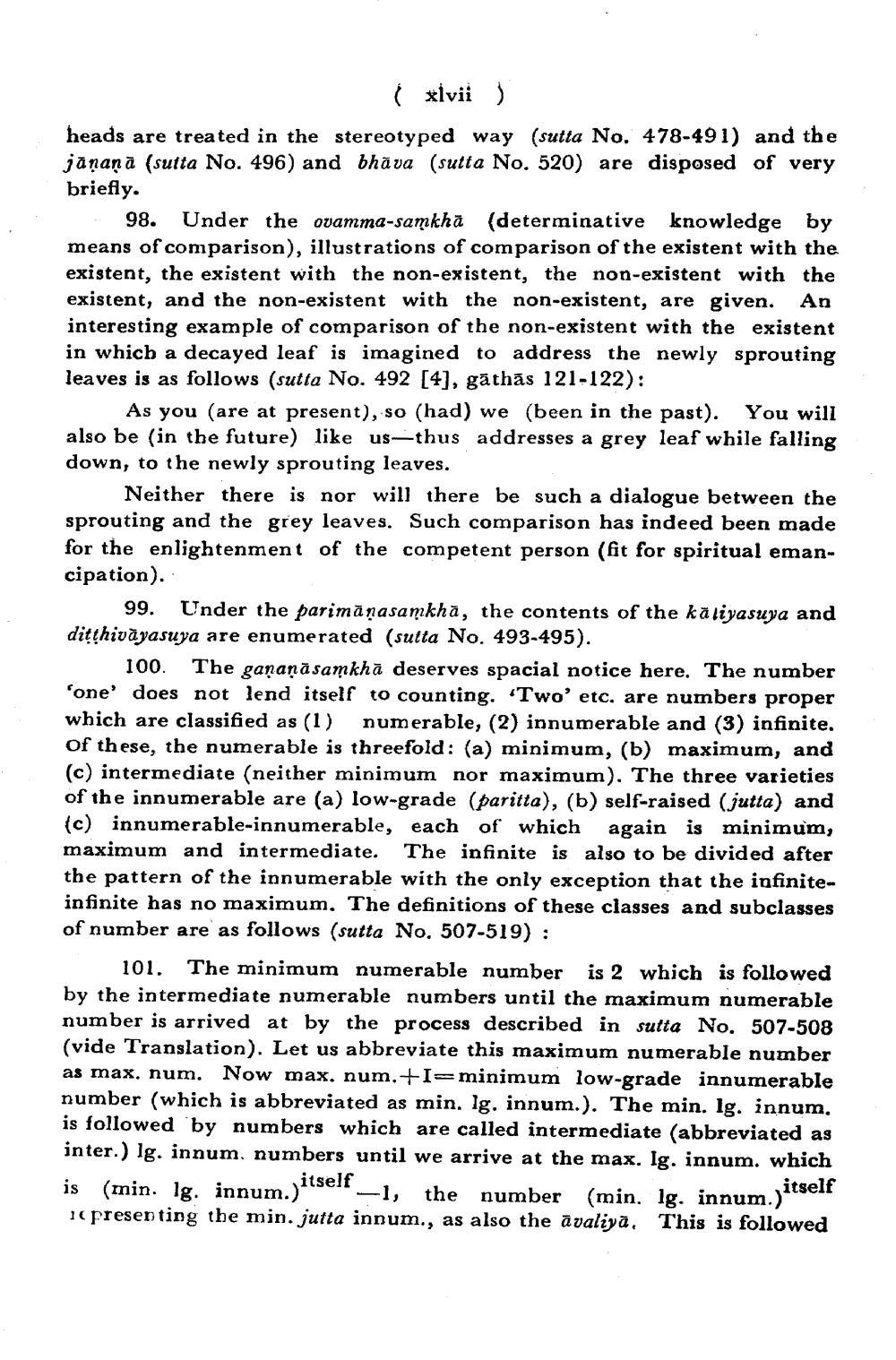________________
( xivii ) heads are treated in the stereotyped way (sutta No. 478-491) and the jāņaņā (sutta No. 496) and bhāva (sutta No. 520) are disposed of very briefly.
98. Under the ovamma-samkhā (determinative knowledge by means of comparison), illustrations of comparison of the existent with the existent, the existent with the non-existent, the non-existent with the existent, and the non-existent with the non-existent, are given. An interesting example of comparison of the non-existent with the existent in which a decayed leaf is imagined to address the newly sprouting leaves is as follows (sutta No. 492 [4], gāthās 121-122):
As you (are at present), so (had) we (been in the past). You will also be (in the future) like us-thus addresses a grey leaf while falling down, to the newly sprouting leaves.
Neither there is nor will there be such a dialogue between the sprouting and the grey leaves. Such comparison has indeed been made for the enlightenment of the competent person (fit for spiritual emancipation).
99. Under the parimānasamkhă, the contents of the käliyasuya and ditthivayasuya are enumerated (sutta No. 493-495).
100. The ganaņā samkhā deserves spacial notice here. The number 'one' does not lend itself to counting. "Two' etc. are numbers proper which are classified as (1) numerable, (2) innumerable and (3) infinite. of these, the numerable is threefold: (a) minimum, (b) maximum, and (c) intermediate (neither minimum nor maximum). The three varieties of the innumerable are (a) low-grade (paritta), (b) self-raised (jutta) and (c) innumerable-innumerable, each of which again is minimum, maximum and intermediate. The infinite is also to be divided after the pattern of the innumerable with the only exception that the infiniteinfinite has no maximum. The definitions of these classes and subclasses of number are as follows (sutta No. 507-519) :
101. The minimum numerable number is 2 which is followed by the intermediate numerable numbers until the maximum numerable number is arrived at by the process described in sutta No. 507-508 (vide Translation). Let us abbreviate this maximum numerable number as max. num. Now max. num. +I=minimum low-grade innumerable number (which is abbreviated as min. lg. innum.). The min. lg. innum. is followed by numbers which are called intermediate (abbreviated as inter.) lg. innum. numbers until we arrive at the max. Ig. innum. which is (min. lg. innum.)itselt -1, the number (min. lg. innum.)itse. icpresenting the min. jutta innum., as also the avaliya. This is followed




